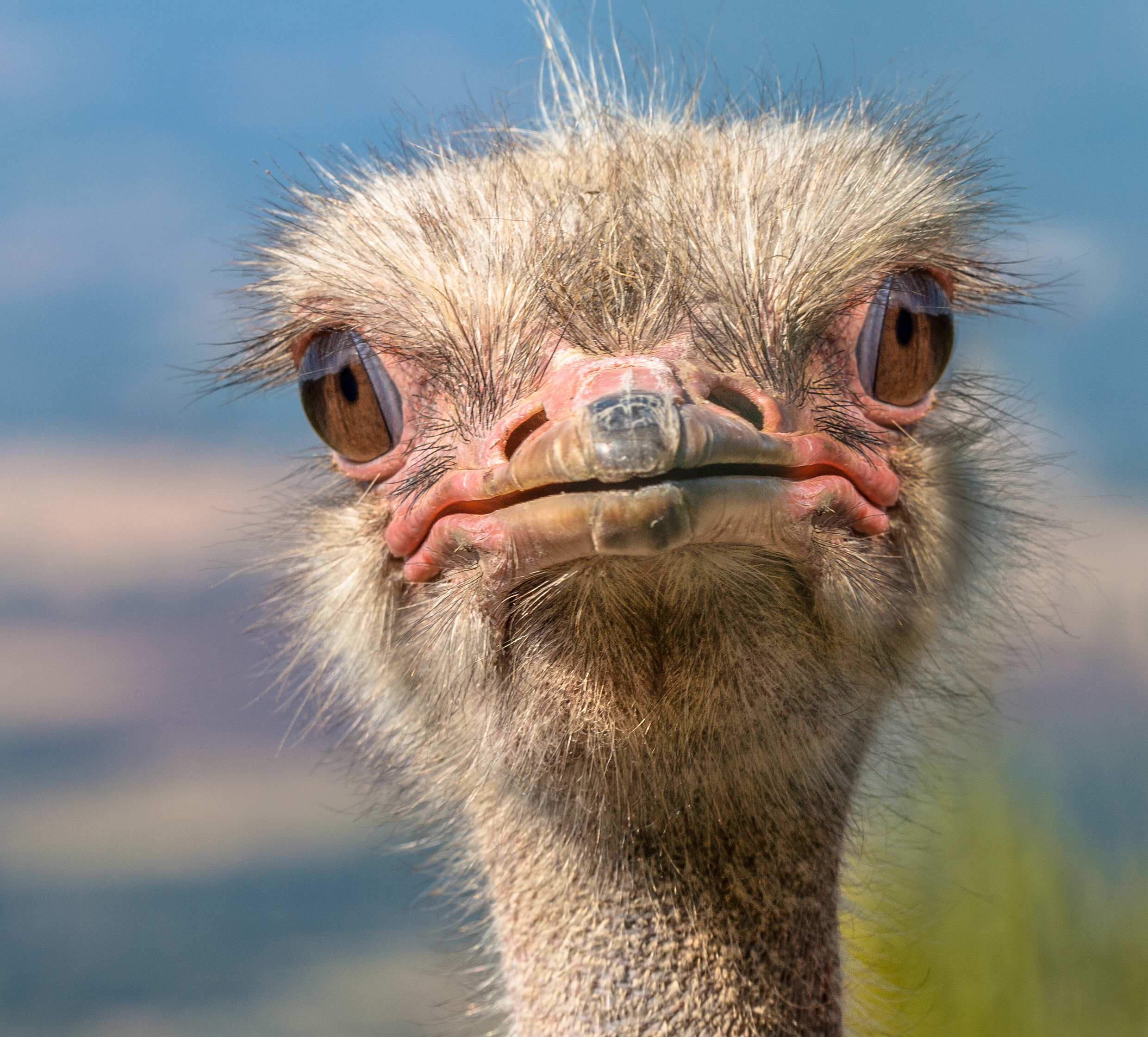I don’t like it when birds try to peck my eyes out. It’s a personal pet peeve, nothing too serious.
This phobia was created while I lived in Curaçao, an island in the Netherlands Antilles. For some odd reason, there is an ostrich farm on the island, and it is very popular among tourists (the connection between Curaçao and Ostriches?? …God only knows). Regardless of my insistent refusal to visit the farm, my parents decided it would be a wonderful family experience. So, I went to go see those cursed Ostriches.

Image by Feed Your Brain
The trip didn’t start like my nightmares. The local guides were excellent. They cleared conspiracies about the species, and let other tourists stand on Ostrich eggs. It was surprisingly fun until the time came to meet the birds in person. Packed into the safari vehicle, I had no chance to escape. This is where the horror begins.
Do you know what it is like to have a huge, oddly shaped bird running full speed towards you? My five brothers loved it. I did not. Putting my clear hatred for the species aside, Ostriches are extremely interesting and deserve proper recognition as one of the weirdest animals in the world.
Ostriches are the largest bird in the world. They typically weigh around 300 pounds and can grow up to 9 feet tall. However, being the world’s largest bird has its setbacks. Ostriches cannot fly. Besides the obvious weight issue, simple evolution contributed to their flightless nature. After the dinosaurs went extinct, there were large amounts of land left uninhabited. In theory, Ostriches started adapting to the land and no longer needed the ability to fly.
Ostrich eggs are strong enough to handle the weight of a human. Don’t believe me? Too bad; I have witnessed this anomaly of nature. The shells of Ostrich eggs are 0.06 inches thick, letting them handle the roughest conditions.

Image by Hills Foods
Another interesting fact about Ostrich eggs: a single egg holds about 2,000 calories. This explains why only 10% of nests survive the breeding season; one stolen egg can feed predators for days. I am not recommending anyone to eat Ostrich eggs, but if you’re in a pinch, go for it.
Obviously, Ostriches do not originate from Curaçao. The species is prominent in Sub-Saharan Africa. Yet, these magnificent birds can be found in captivity all over the world. The IUCN has listed the species as a ‘Least Concern’. While the population of Ostriches in the wild has decreased significantly, Ostrich farms are extremely popular around the world. This tourist demand helps protect the species from extinction.
Putting my biased feelings towards Ostriches aside, I highly recommend visiting the Ostrich Farm if ever on the island of Curaçao. If you do not have an issue with big birds violating your personal space, this activity is for you. It was definitely a unique experience I will never forget (no matter how hard I try).